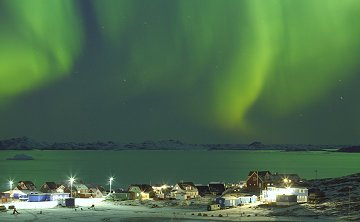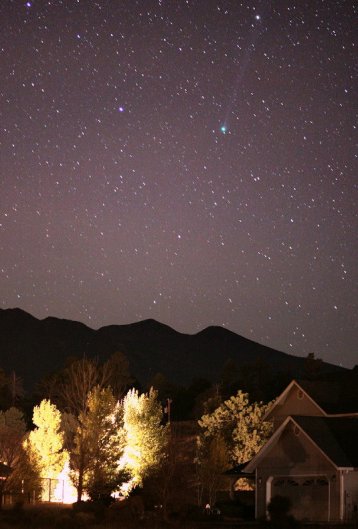 Autumn is here, and it's a wonderful time for stargazing. Find out what's up from Spaceweather PHONE.
Autumn is here, and it's a wonderful time for stargazing. Find out what's up from Spaceweather PHONE.
TRANSIT OF MERCURY: Mark your calendar: On Wednesday, Nov. 8th, Mercury will pass in front of the Sun. The transit will be visible from the Americas, Hawaii and all along the Pacific Rim. It's a marvelous opportunity for art and photography.
WEEKEND AURORAS: "What a show! Even the sea changed colors," marvels Rune Christiansen who photographed these intense Northern Lights over Nuuk, Greenland last night:

The display was caused by a solar wind stream that hit Earth on Friday night, Oct. 28th. The impact did not cause an outright geomagnetic storm, but it was enough to spark auroras throughout the weekend over parts of Scandinavia, Canada and Greenland.
October 2006 Aurora Gallery
COMET SWAN: Just 15 seconds. That's all the exposure time Brian Klimowski needed to photograph Comet Swan setting over the San Francisco Peaks near Flagstaff, Arizona, on Oct. 27th:

Photo details: Canon 5D, 85mm, f/1.8, 15 sec, ISO 1600.
Comet Swan (C/2006 M4) is receding from Earth and no longer visible to the naked eye, but as Brian's photo shows it remains a good target for astrophotography. All you need is a digital camera, a tripod and a sky map.
BONUS: Using a 5-inch telescope, Mike Holloway of Van Buren, Arkansas, took seven photos of Comet Swan's tail and stitched them together to make this spectacular image.
Comet Swan Photo Gallery

